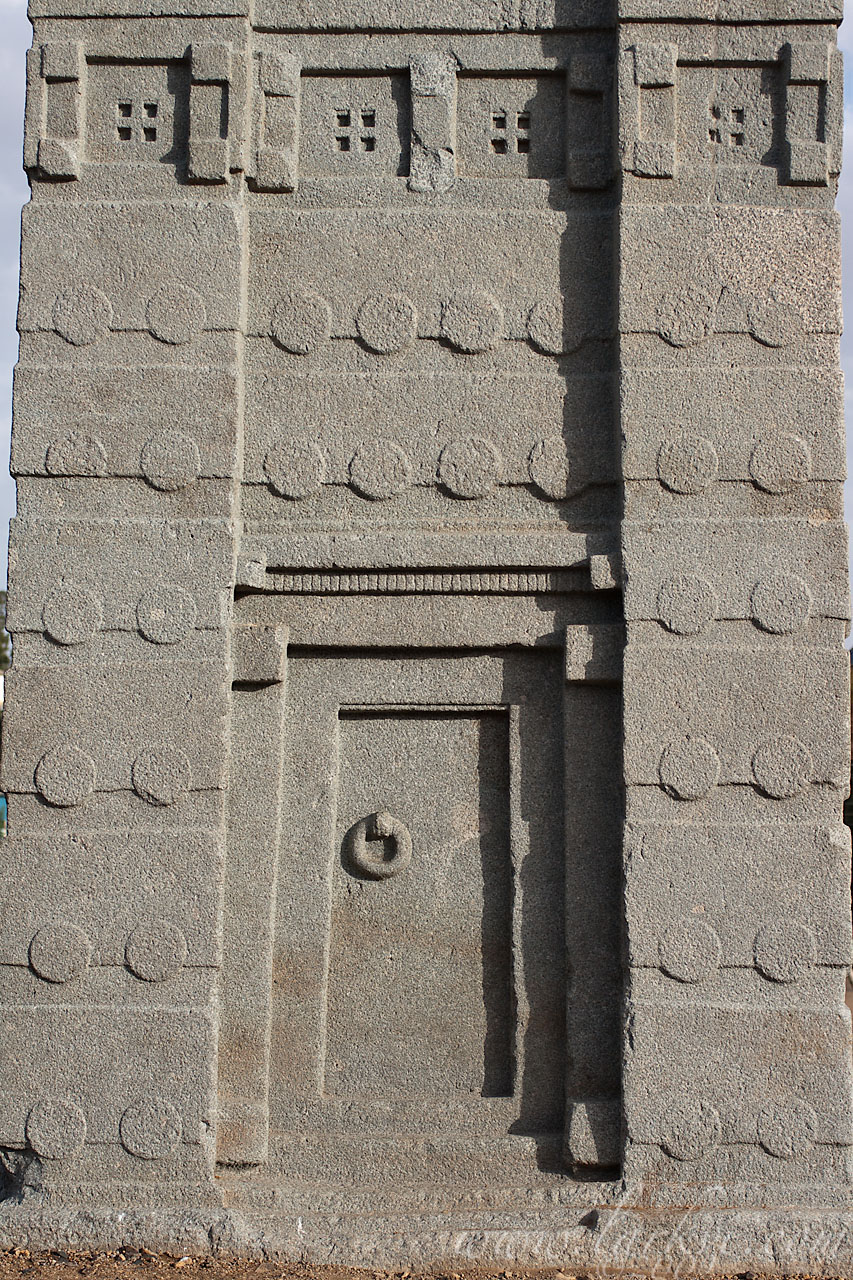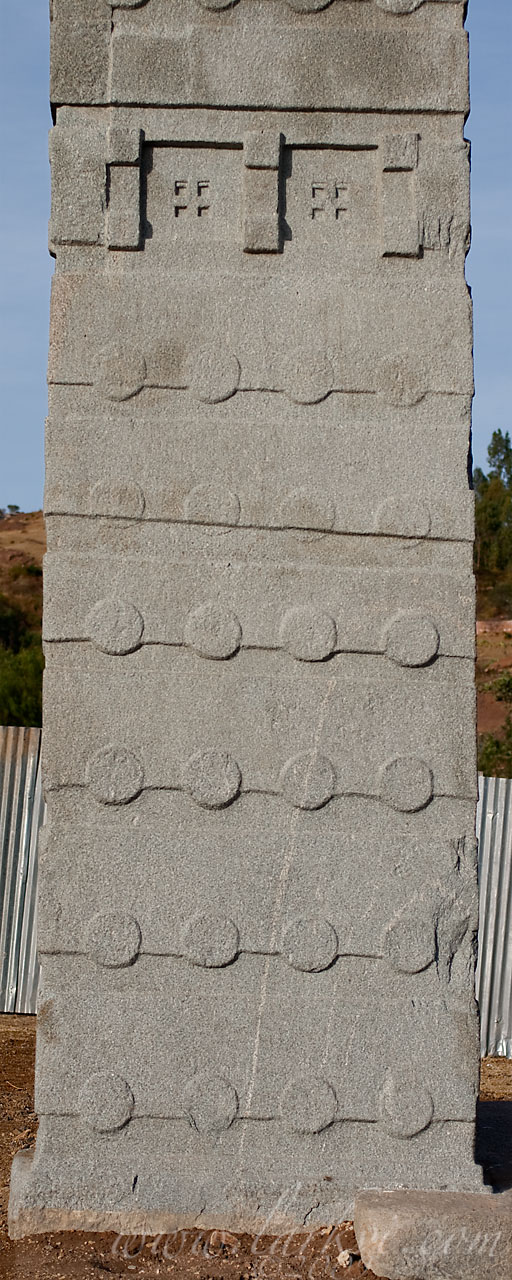Stela 2 in front of the new Maryam Tsion Church.
The false-door on the Rome Stela, granting access to the palace which the stela represents.
A side-view of the Rome Stela, showing the carving representing the ends of wooden poles and alternating layers of stone and wood, characteristic of Axumite building.
—–
Stela 2, known as the ‘Rome Stela,’ stands in the North Stela Field in Axum and is, at 24.6m tall (2.9m of which is underground), the largest stela ever to be successfully erected (the ‘Great Stela,’ though considerably larger, seems to have fallen during the process of erection). It was erected just before the apogee of stela-building, which greatly declined with the fall of the Great Stela, concurrent with the Christianization of the Axumite Empire. All the stelae appear to mark tombs or graves of important individuals from Axumite times. The tombs associated with Stela 2, like many others, seem to have been extensively pillaged in the 17th century; the disturbance from such excavations as well as the generally under-studied nature of the field, complicates dating.
At some point in the medieval period, the stela was deliberately sabotaged by the digging of a destabilizing trench; its subsequent collapse shattered the stela into five major and numerous minor pieces. The myth of Queen Gudit attributes destruction of stelae to Gudit’s general devastationof Axum in the 12th century, but the Gudit legend is problematic, conceived as political attack and possibly conflating several historic figures (if it indeed represents any) in its more recent version. It was in this (fallen) state that the stela was recorded by the first Europeans travel-writers in the 17th century, and in this state that it existed at the time of the Fascist occupation when, at Mussolini’s personal order, (most of) the fragments were removed to Rome, reassembled and erected in the Piazza di Porta Capena.
It continued to stand in Rome until 2005; in 1997 Italy and Ethiopia agreed on the return of the monument to Axum, which was not effected until the later date. Further complicating matters, unexplored tombs under the ground around the stela meant that heavy cranes could not be used, and it lay in pieces next to the parking lot for three year. When it was re-assembled in 2008, it stood in its original place for the first time in centuries.
For more information on Stela 2 and Axumite stelae more generally, see:
Phillipson, David. Archaeology at Aksum, Ethiopia, 1993-7, vol. 1. London: The British Institute in East Africa 2000. pp. 139-156.
Munro-Hay, Stuart. Aksum: An African Civilisation of Late Antiquity. Edinbugh: Edinburgh University Press 1991. pp. 125-143.



